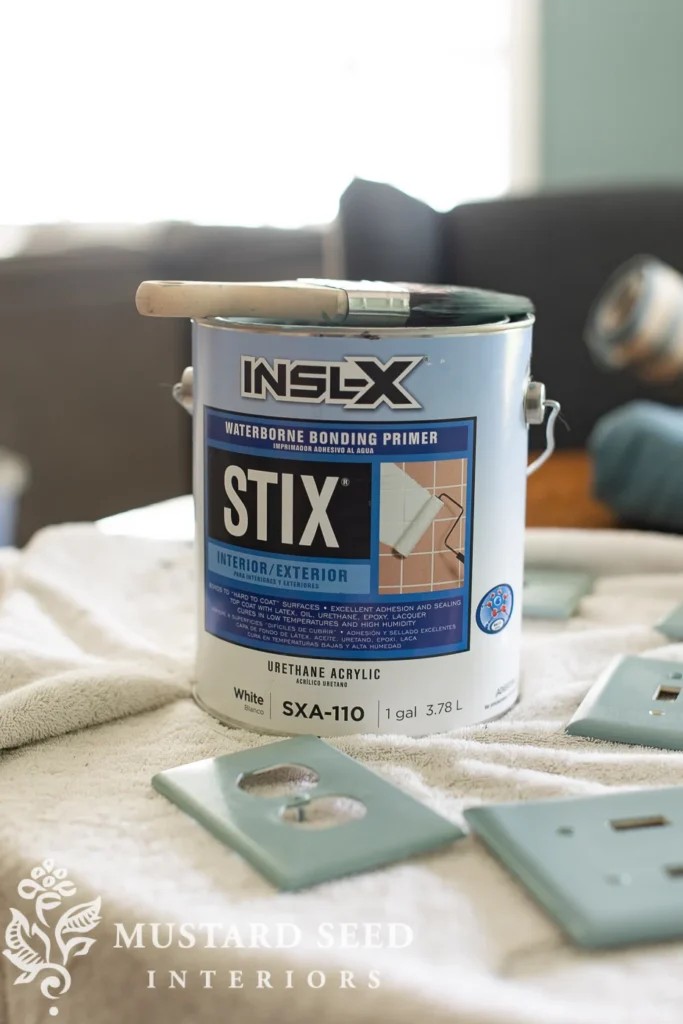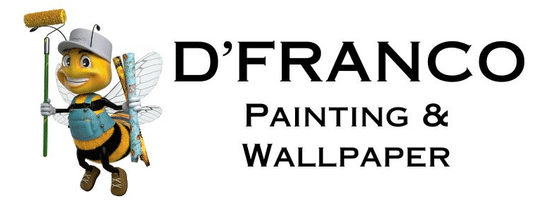Stix Bonding Primer vs. B-I-N Shellac-Based Primer
WHAT PRIMER SHOULD I USE?? Are you confused about what primer to use, where to buy it and the differences in primers? Join the club! When it comes to priming surfaces for painting, selecting the appropriate primer is crucial for achieving last results. The type of primer you need will depend on the what you are painting. For today’s article- we are discussing primer options for painting cabinets-Stix vs BIN Primer. Two popular options (for us here in Kane County/Mchenry County) are Stix Waterborne Bonding Primer found at Benjamin Moore Jc Licht Stores and Zinsser B-I-N Shellac-Based Primer.
Each has unique properties, advantages, and ideal applications. Let’s delve into their differences to help you make an informed decision for your project.
Topics we will review in this artilce-
- Stix Bonding Primer vs. B-I-N Shellac-Based Primer
Composition of each primer
- Stix Waterborne Bonding Primer: This is a water-based acrylic-urethane primer known for its exceptional adhesion to challenging surfaces- this stuff is made to stick to glass! Easy clean up, low oder.
- Zinsser B-I-N Shellac-Based Primer: As the name suggests, this primer is shellac-based, utilizing natural shellac dissolved in alcohol. It’s renowned for its stain-blocking capabilities and quick drying time. It will cover almost any stain you have. BUT!!! IT SMELLS!!! Well Ventilated and resperator are requied!
Odor and VOC Contents Of Stix and BIN
- Stix Primer: Being water-based, it emits minimal odor and has low volatile organic compounds (VOCs), making it more user-friendly for interior applications.
- Zinsser B-I-N Primer: The alcohol content results in a stronger odor and higher VOC levels. Again- YOU MUST have flowing ventilation and a mask on when using this stuff!
- MSDS on Bin Primer
- MSDS on Stix Primer
Drying Time of Primers
- Stix Primer: Dries to the touch in approximately 30 minutes and is ready for recoating after 3-4 hours. Full curing may take up to 7 days. Use a fan and it will dry faster.
- Zinsser B-I-N Primer: Dries remarkably fast, often within 15 minutes, and can be recoated in 45 minutes. This is a chemical so you cant speed up the dry time, 15 min is fast enough.

Adhesion and Surface Compatibility of BIN vs Stix
- Stix Primer: Engineered to bond tenaciously to a variety of surfaces, including PVC, vinyl, plastic, glass, tile, and glossy finishes. It’s suitable for both interior and exterior applications. Keep in mind you do need to clean, scuff or sand the surface for best adhesion.
- Zinsser B-I-N Primer: Although this primer will adhere to most surfaces and is particularly effective at sealing porous substrates like wood, plaster, and drywall, it is not a true bonding primer. To get it to stick correctly, you need to make sure you sand the surface so it has something to stick too.
Stain Blocking and Odor Sealing Abiltites of primers
- Stix Primer: While it offers good adhesion, it’s not specifically formulated for stain blocking or sealing odors.
- Zinsser B-I-N Primer: Highly effective at blocking stubborn stains (e.g., water, nicotine, tannin) and sealing in odors from smoke or pets, preventing them from bleeding through the topcoat.
Weather and Temperature Application Conditions
- Stix Primer: Can be applied in temperatures as low as 35°F (1.7°C), making it versatile for various climates and suitable for exterior projects.
- Zinsser B-I-N Primer: Best applied in temperatures between 45°F (7°C) and 85°F (29°C). It’s primarily recommended for interior use due to its brittleness when fully cured.
Cleanup Stix vs BIN
- Stix Primer: Cleanup is straightforward with soap and water, thanks to its water-based formulation.
- Zinsser B-I-N Primer: Requires denatured alcohol for cleanup, which can be more cumbersome and necessitates careful handling- and again you need a resperator! This stuff smells. PLus you have to know where to get rid of the clening solution, it cant just be thrown down the drain.
Pros and Cons of Stix and BIN Primers
Stix Waterborne Bonding Primer
Pros:
- Exceptional Adhesion: Users praise its ability to bond to challenging surfaces without the need for extensive sanding.
- Low Odor: The minimal smell enhances user comfort during application.
- Versatility: Suitable for a wide range of substrates, both indoors and outdoors.
- Quick and easy clean up
- Easy to sand
- Builds up layers for uses like ours- priming oak cabients and filling in oak grain.
Cons:
- Drying Time: Some users note that it has a longer drying and curing time compared to other primers.
- Price Point: It’s often priced higher than standard primers, which may be a consideration for budget-conscious projects.
Zinsser B-I-N Shellac-Based Primer
Pros:
- Rapid Drying: The quick drying time allows for faster recoating and project completion.
- Superior Stain Blocking: Effectively seals in tough stains and odors, preventing bleed-through. HubPages
- Smooth Finish: Its thin consistency levels well, providing a smooth base for topcoats.
Cons:
- Strong Odor: The alcohol-based formula emits a potent smell, requiring good ventilation during use.
- Cleanup Challenges: Cleaning tools necessitates denatured alcohol, which can be less convenient than soap and water.
- Brittleness: Once cured, the primer can become brittle, making it less suitable for surfaces that experience flexing or movement. The Decorators Forum UK
Ideal Applications
- Stix Primer: Best for projects involving hard-to-coat surfaces like tiles, glass, or plastics, especially when low odor and exterior application are priorities.
- Zinsser B-I-N Primer: Ideal for interior projects requiring stain blocking and odor sealing, such as priming over water stains, smoke damage, or tannin bleed in wood.
Here is a senario we had a few years back for a cabinet painting project we were working in St. Charles a few years ago. The cabinets were oak and visually and functinally were in great shape and perfect candidate for cabinet painting. Ready for the but? However– no buts today.. the cabinets were extremel dirty- they were filled, covered, impregnated with cooking oil and curry.
Normally we are not too woriied about some oil or dirt, it is normal. This location wsa far from normal.. take a peek at this video
Normally we can use a scuff pad and dawn dish soap. This job- holy carp!!! We used Tsp, tri-sodium phosphate, and still had to use dirtex! Then wipe clean with denatured alcohol. IT WAS AWEFUL.
Then once cleaned the stain from the oil and oraange from the curry -oh did i forget to mention at some point there was a smoker in the house? Which meant- BIN primer. We tried oil- but the oil, smoke and curry were no match for oil- so shellac it was. Not a fun week for the Dfranco Painitng team.
What we learned about Bin and Stix?
Both Stix Waterborne Bonding Primer and Zinsser B-I-N Shellac-Based Primer are high-quality products tailored for specific needs. Your choice should be guided by the specific requirements of your project, including the type of surface, environmental conditions, and whether stain blocking or low odor is a priority. Always ensure proper ventilation and follow safety guidelines during application to achieve the best results.
have other questions on cabinet painnting? check out our FAQ about cabinet painting
book an estimate with us for cabinet painting, interior painting, or wallpaper here…Book an Estimate now!


